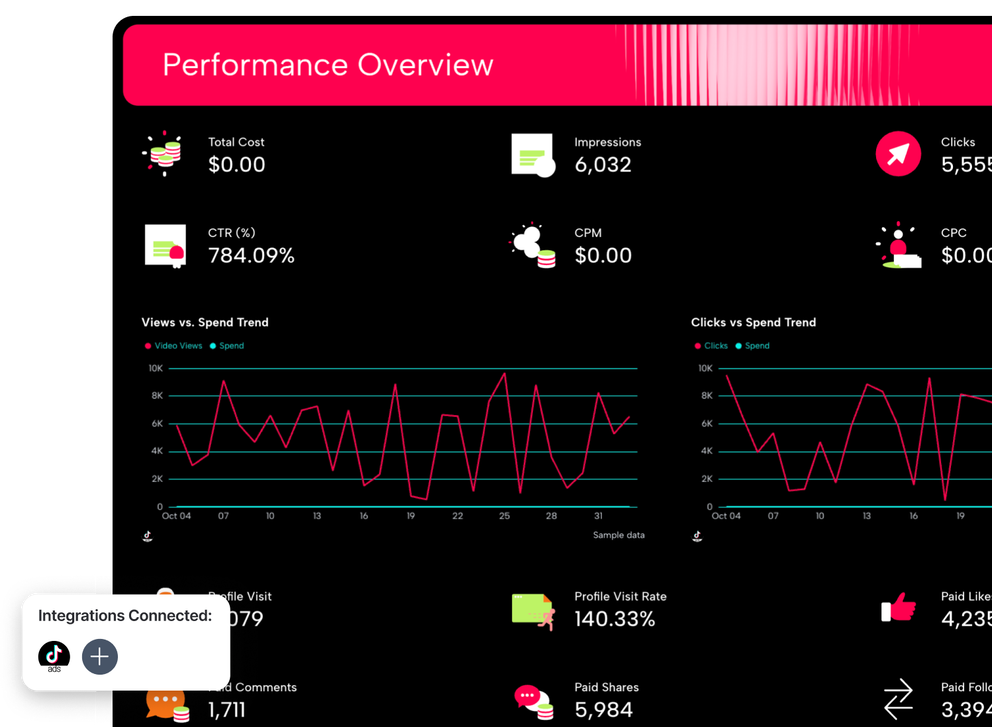What to Include in a TikTok Performance Report Template?
A TikTok ads report template gives you a complete view of your campaign performance, from ad spend and reach to conversions and demographics. Here’s how to structure it for clear insights and easy sharing.
1. Performance Summary
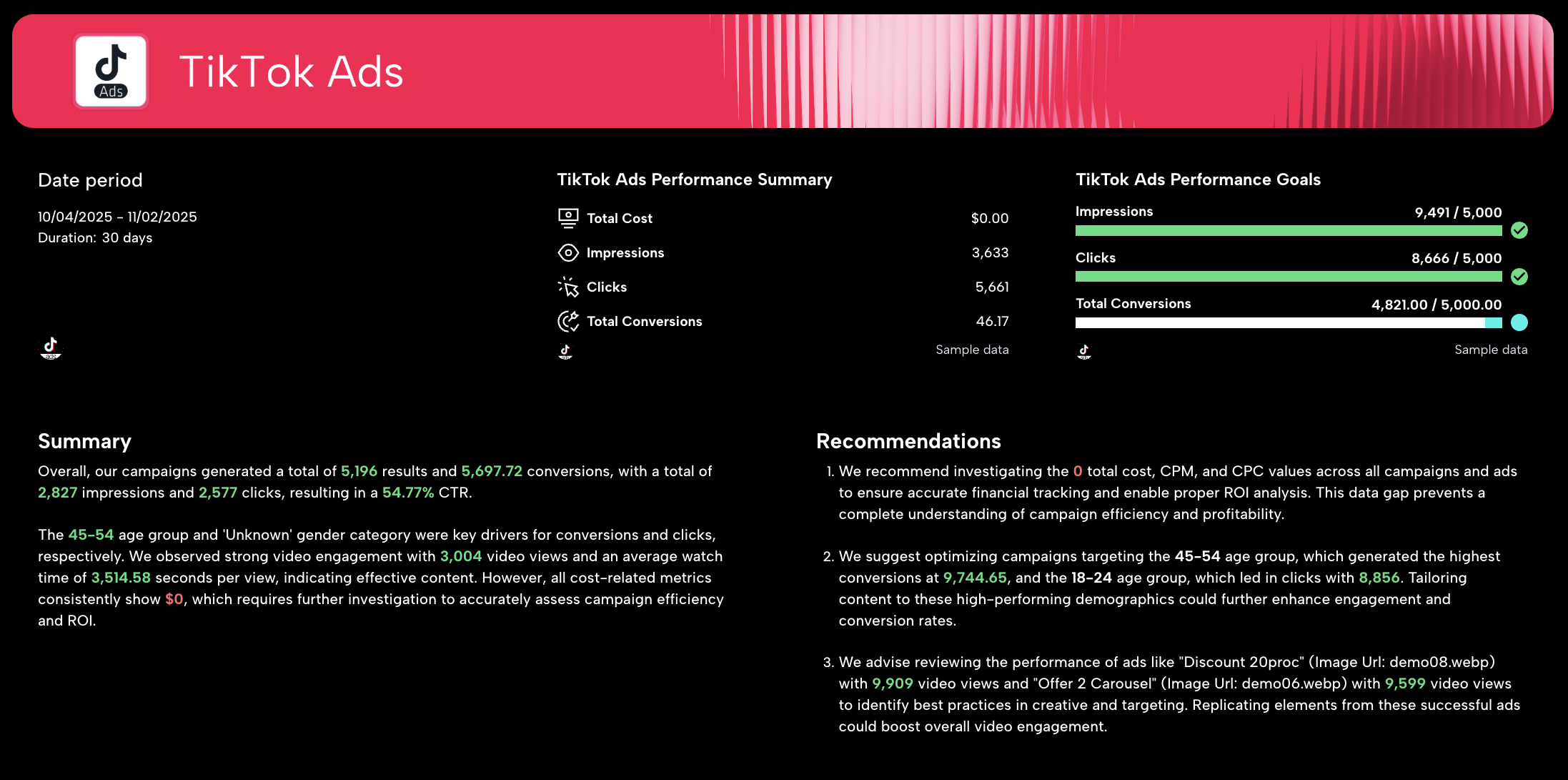
Start your report with a clear overview of your TikTok ad campaigns for a specific time period.
Include:
- A goal widget showing KPI progress such as impressions, clicks, conversions, and engagement.
- A performance summary list that displays these metrics for the reporting period, like “last 30 days.”
- Text widgets for insights, recommendations, and next steps.
With Whatagraph IQ, you no longer have to write summaries manually. You can ask Whatagraph to write them in 18 different languages, based on the data already in your report. For example, you could write a custom prompt like “Summarize key wins and recommend optimizations for the next campaign cycle.”
IQ uses your actual TikTok data to generate insights, so there are no hallucinations or inaccuracies. You can fully edit the text to match your tone and style, and because everything happens inside Whatagraph, there’s no risk of data breaches or sharing information with third-party tools.
2. Performance Overview
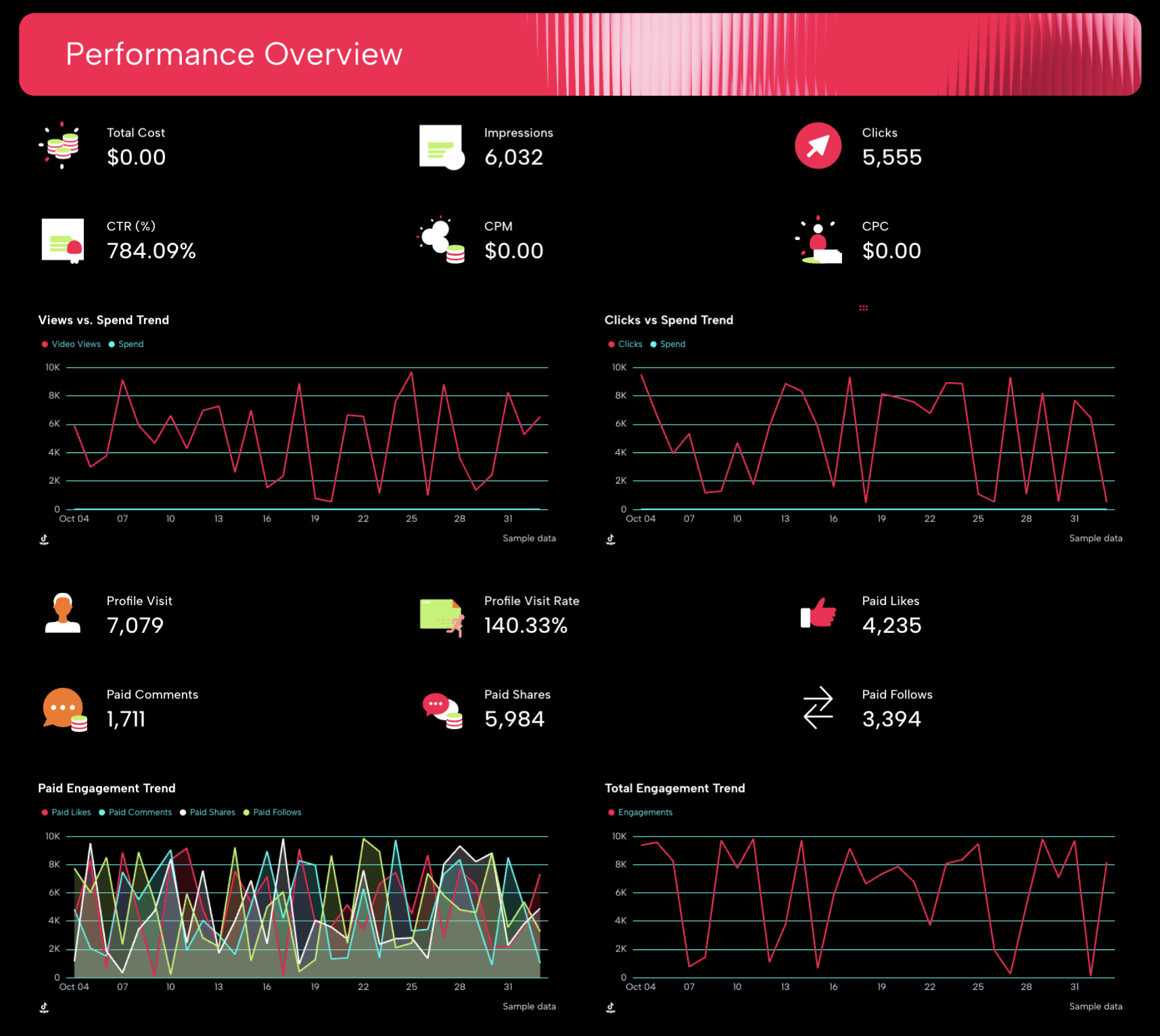
This section visualizes your most important KPIs in single-value widgets.
Show metrics like total ad spend, impressions, CTR, CPC, CPM, and conversion rate.
Compare these performance metrics with the previous period to show growth or decline. Add graphs or line charts to illustrate trends in real time, making it easy for clients or marketing teams to track progress.
3. Reach Breakdown
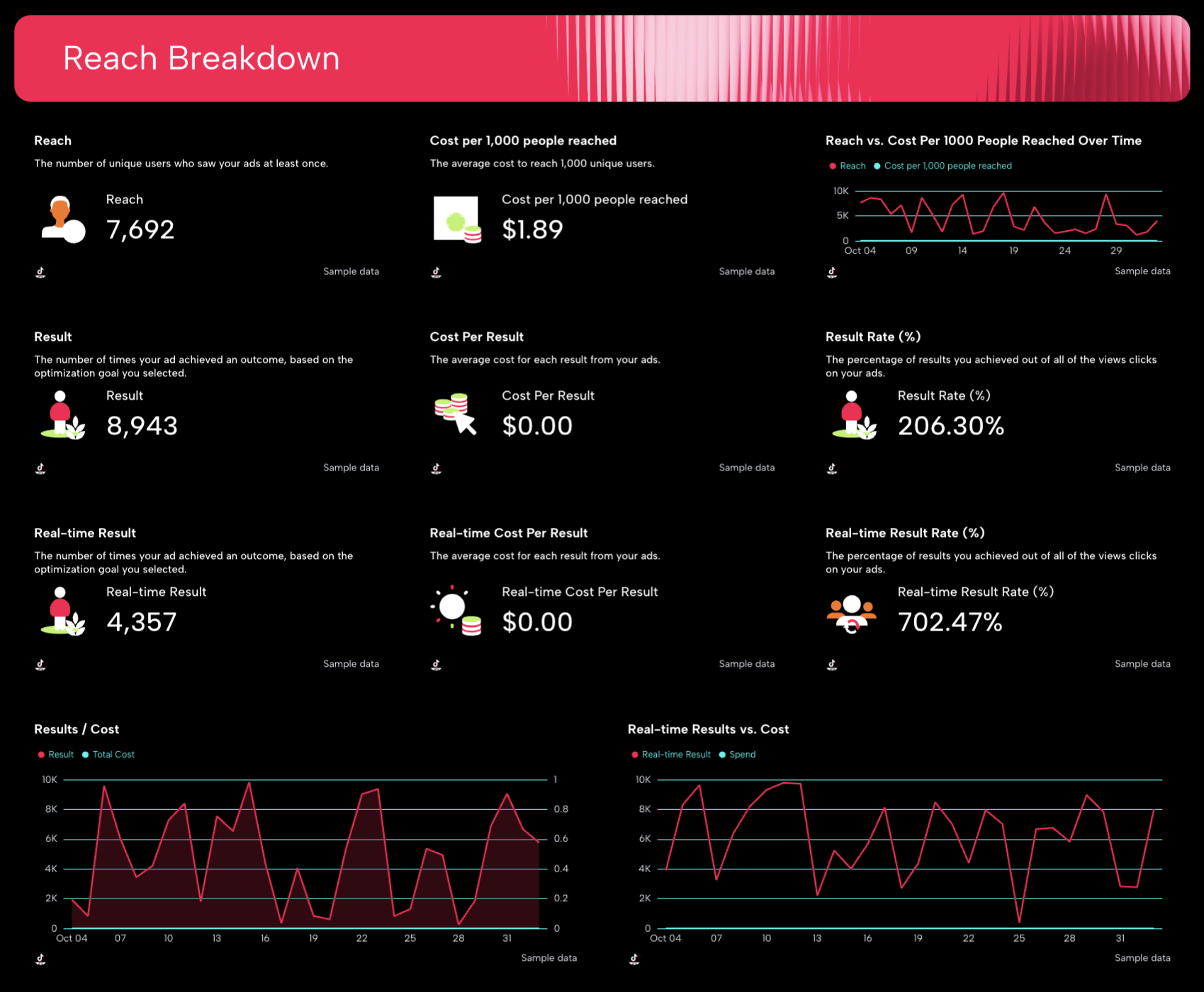
Visualize reach KPIs to understand how far your TikTok ads are spreading. Show total reach, unique users, and cost per 1,000 people reached, then display trends over time.
You can also compare one metric to another — for example, reach vs. cost — to spot opportunities for better budget optimization and content strategy.
4. Campaign and Ad Performance
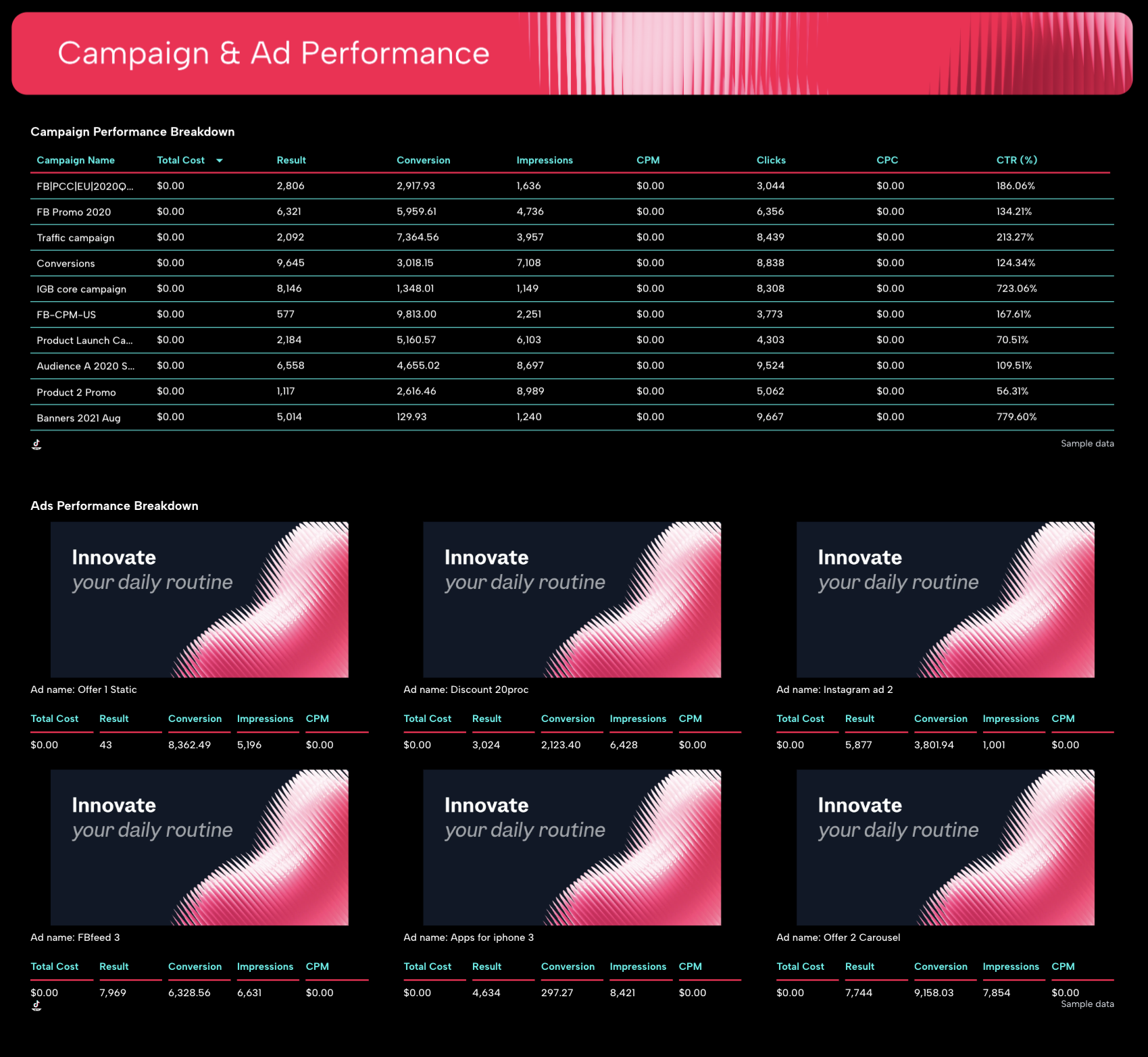
This is where you dig into the details of each campaign.
Include a table showing campaign performance metrics like total cost, results, conversions, impressions, CPM, clicks, CPC, and CTR.
This view helps you see which campaigns are performing best and which need adjustments. Add a carousel of top-performing TikTok ads that includes thumbnails and KPIs for each. These visuals make it easy to show what’s resonating with your audience and what could be improved.
5. Views Breakdown

In your TikTok Ads dashboard, focus on video performance and engagement metrics like video views, average watch time, and view-through rates.
Use trend charts to show how these metrics change over time.
Add a carousel that highlights ads with the highest video views and engagement rate, helping your team or clients understand which creatives are driving the strongest response.
6. Engagement Breakdown
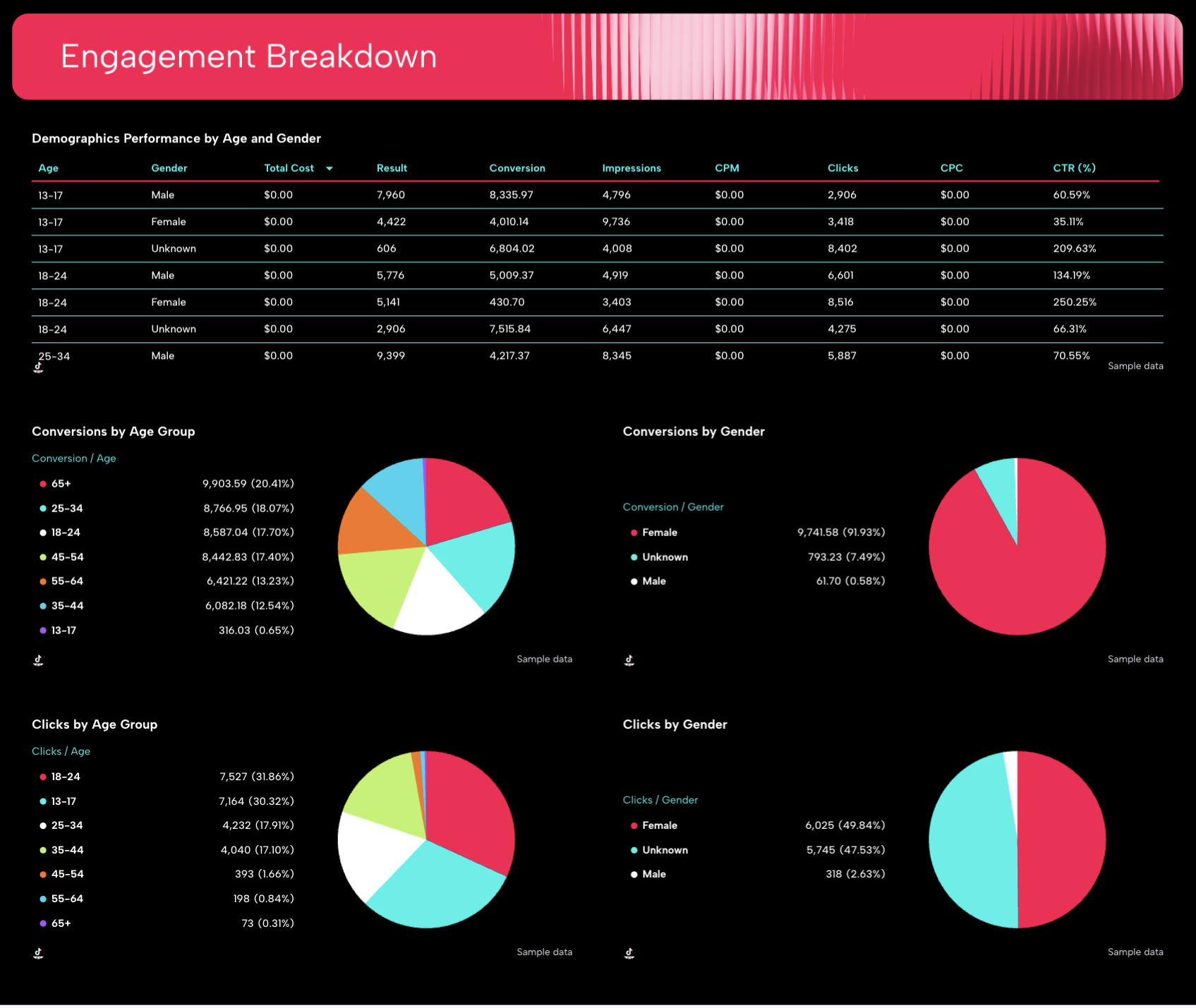
Round out your TikTok report with an audience-focused view.
Include a table breaking down performance by demographics such as age and gender, showing key metrics like clicks, impressions, cost, and CTR.
Use pie charts to visualize conversions and clicks by age group or gender. This makes it easy to see which segments are engaging most and where to optimize targeting.
You can break down any KPI by demographic category, helping you connect performance insights directly to audience behavior.
